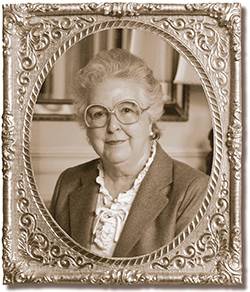
Purchase Tickets
How Indianapolis Got to Sesame Street
April 9, 2021

“Sunny Day
Sweepin’ the clouds away
On my way to where the air is sweet
Can you tell me how to get?
How to get to Sesame Street”
Since November 1969, children have grown up spending their mornings learning from well-known characters such as Big Bird, The Cookie Monster, Oscar the Grouch, Bert and Ernie. Months later, families in Indianapolis were asking why they couldn’t get the show on their local sets. When Sesame Street first aired, Indianapolis only had four commercial television stations and was the largest city in the nation without a public television station.
So, how did Sesame Street make it to Indianapolis? It took the leadership of one enterprising mother and an army of women from across the city.

Ardath Burkhart. Courtesy of WFYI.
Fundraising efforts for what was then called educational television in the city since 1965. By 1968, Channel 20 had cobbled together around $1 million in donated equipment but was still shy of the necessary $300,000 to fund operations. After several failed attempts, Mayor Lugar invited Ardath Burkhart and other community members to revitalize the Educational Television Task Force. She understood the importance of the television programs to mothers in the community and mobilized them to raise the money needed. “I told the Board that perhaps the problem was that men were trying to do the fundraising,” explained Ardath. “I thought women, who have to police the television sets… would be more likely to see a need for public television and… work for it.”
“General” Burkhart organized the “Pantyhose Platoon” by zip code to systematically canvas the city. On March 1, 1970, “Ardath’s Army of over 9,000 women set out to fundraise and went door-to-door to ask for donations in order to bring public television to Indianapolis. The women would explain the opportunities that public television would bring to Indianapolis, such as opera, educational programs, and a new way to learn.
The Army won their battle, raising the money from 15,000 members over three weeks. On October 4, 1970, Channel 20, WFYI began broadcasting from the grounds of the Indianapolis Museum of Art. Although the money had been raised, Ardath did not stop there. She stayed involved with WFYI for the rest of her life, championing new fundraising opportunities like the famed WFYI auction. To this day, WFYI gives all their thanks to Ardath and the work of her army, which is how Indianapolis got to Sesame Street.
Want to learn more? Explore this short documentary on Adath’s Army from WFYI.









